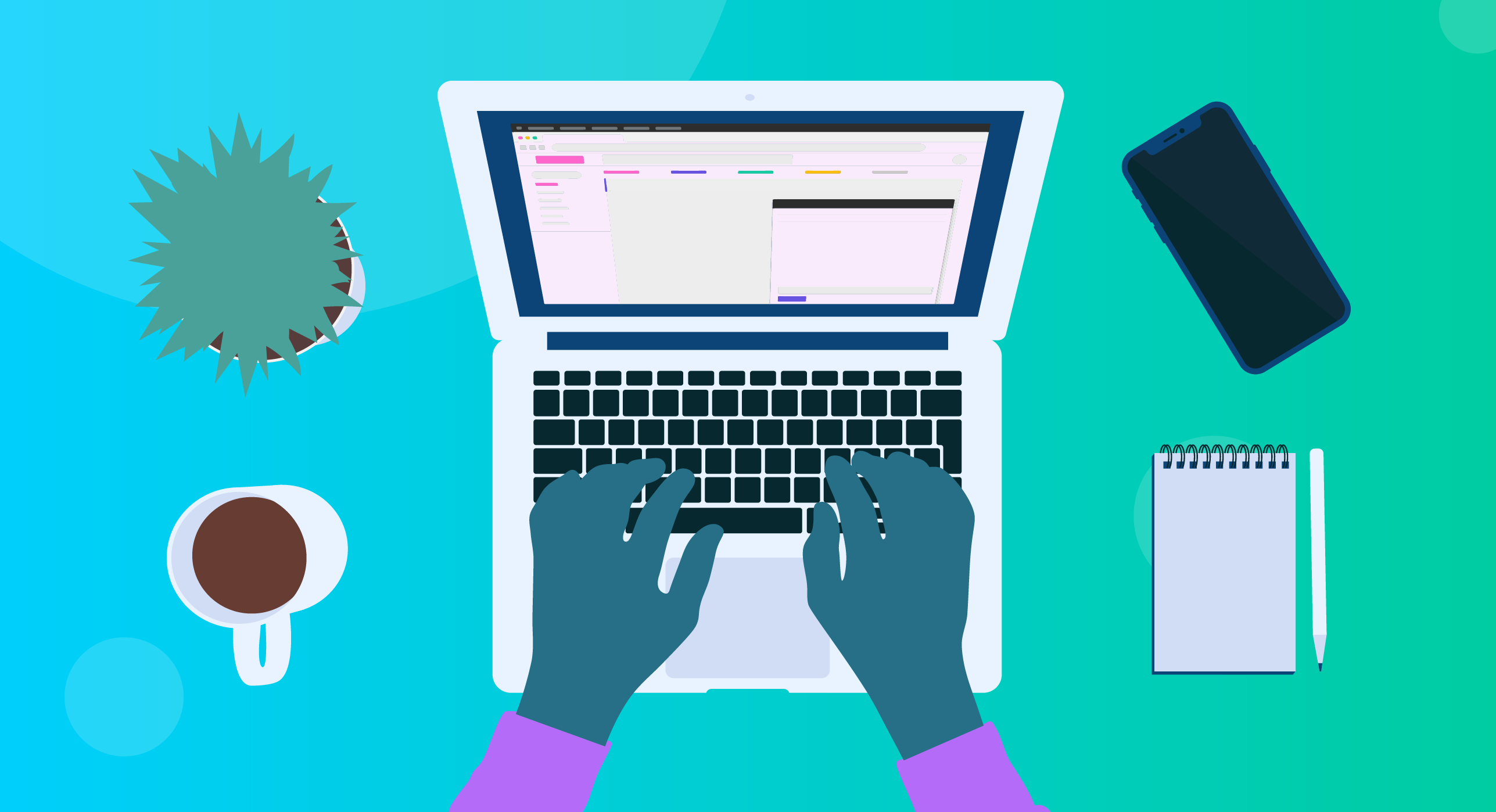There’s a lot of talk about Telehealth recently, so you may be wondering what exactly is it? If you’re operating a health clinic, Telehealth is something you want to learn about as it has the power to transform your practice. Across the globe, Telehealth is helping make treatments available to more people and transforming the provider-client relationship. From psychologists to physicians, Telehealth is changing the way that healthcare providers and their clients interact, and the results are very encouraging.
If you’re worried about how your clients might react to Telehealth, don’t be. As most countries have issued a stay-at-home order, Telehealth is the most preferred way of consultation for our clients and their patients (when possible). With access to high-speed internet becoming standard, along with devices such as smartphones or laptops for connection, it’s likely that most of your clients will be perfectly positioned for using Telehealth.
Here, we’re demystifying exactly what is Telehealth, we’ll uncover which healthcare disciplines are integrating Telehealth solutions successfully, then we’ll take a deep dive into the many benefits that Telehealth offers.
What is Telehealth?
Telehealth is the term used to describe all of the telecommunications technologies that enhance the level of care that healthcare services offer. Officially, it’s not one specific service, but rather the use of technology to facilitate medical, health and education services and, in so doing, enhance client care.
If you take the case of a person with heart disease, Telehealth could help by:
- Making secure video calls between the client and provider possible, for weekly check-ins, progress reports or feedback about the client’s condition.
- Facilitating the upload of data related to diet, medication and self-administered vitals for review by a medical professional.
- Educating the client, with videos on food choices, exercise tips and more.
- Using an app that tracks blood pressure levels.
- Offering video conferencing, so that the healthcare provider can consult remotely with other specialists if needed.
- Accessing an online patient portal (such as Power Diary) for test results, prescriptions, emailing the healthcare professional with questions or scheduling appointments.
- Getting email, text or phone reminders.
However, the more common understanding of Telehealth is healthcare providers conducting video calls with their clients.
What is Telehealth Used For?
In the past, Telehealth was about helping clients in inaccessible areas, but now we are learning that there are many more reasons to use Telehealth. The current pandemic is teaching us that many practitioners can service their clients remotely whilst still providing their usual levels of care.
Even after this pandemic has passed, Telehealth is likely to become more mainstream as it is convenient for busy clients, or clients that find it difficult or inconvenient to leave their home. It also allows access to specialised medical service providers who are based in different geographic locations, improves communication and coordinated care, and encourages patient self-management.
Technologies include live video (or “real-time”) appointments and check-ups, mobile health (using smartphones to communicate patient health information), remote patient monitoring to collect client health data, and more:
- Virtual appointments – videoconferencing facilities means you can see your doctor or nurse in a virtual appointment format. You can receive ongoing care without the need for an in-person visit. It’s also useful for the diagnosis and treatment of minor illnesses, as you can be guided through a list of questions.
- Patient portal provides a secure portal for communication with your healthcare provider where you can request prescriptions, review test results, schedule appointments and more.
- Remote monitoring means that clients can monitor the patient’s health online. This includes web and mobile apps, monitoring devices (for blood pressure, blood glucose and lung function), wearables (for heart rate, physical activity, and sleep patterns), and home monitoring devices.
- Care coordination – a virtual consultation can get a team of specialist in the same room for input, without the physical need to bring everyone together. This can include the electronic sharing of medical notes, test results, and x-rays, allowing the specialist access to the information they need to determine whether the client needs a referral.
- Health apps – many people are already collecting this information using a smartwatch, or their mobile devices. These digital products can be used to store personal health information, track calorie intake, exercise activity, schedule medication reminders and more.
Which health practitioners should consider using Telehealth?
Telehealth, also often called Telemedicine, e-health or m-health, is a good fit for practices that include:
- Counselling;
- Chronic disease monitoring;
- Education.
Some examples of practices that can integrate Telehealth include psychologists, dieticians, and personal trainers. Other disciplines that may need to see their clients in person but could do follow-up appointments remotely include occupational therapists, physical therapists, podiatrists, speech therapists, and even specialist physicians.
In most cases, if you’re prepared to think a bit creatively, you could benefit from integrating Telehealth into your client care toolkit regardless of what healthcare services you offer. Taking proactive steps to include Telehealth features means that you will be prepared in the event of a natural disaster, or even something as mundane as a traffic jam, and can continue to offer care to your clients.
How does Telehealth benefit your clients?
When clients understand the advantages of Telehealth they are often very receptive to moving some, if not all, their care online. The list of benefits for your clients is pretty long, so make yourself a cup of coffee and keep reading.
Why would you want to offer Telehealth services? Because:
It means your clients receive better care.
In a very real way, Telehealth moves us toward a high level of care for clients as there are fewer physical barriers, more flexibility and greater convenience, which leads to improved communication. As a healthcare provider, your priority is the health and wellness of your clients, but high travel and time costs, among others, may mean that your clients can’t benefit from everything you can offer. While in-person care will continue to be important for many health disciplines, most can be supported by Telehealth for check-ups, ongoing education and follow-up visits. And if you practice in a rural setting, this is going to be even more important.
It offers higher levels of client self-care and engagement.
This can be a surprising benefit, but it makes sense. As health practitioners, you know how important it is for your client to take an active role in their health journey, and Telehealth has proven an effective way to do this. This includes remote monitoring for chronic health conditions, where the client has to learn how to use the monitoring device that usually comes with an app and this makes them more aware of their health on a day-to-day basis.
It’s more convenient for clients.
If you run a healthcare practice, you’ve probably noticed that you’re fully booked in the mornings, around lunch and late afternoons, but it can be a challenge to fill up other time slots. If you could introduce the option of a virtual appointment, you might easily be able to fill those slots or rearrange your schedule to make different, more convenient times available to your clients. For physicians, if you use other Telehealth technologies, you could use this downtime to analyse and provide feedback to clients with remote patient monitoring.
It also means that you’re going to have fewer no-shows, as was the case with a Nebraska Children’s Hospital where rural clients would often be prevented from arriving for appointments (particularly follow-ups). Introducing Telehealth meant that they were able to improve those no-show rates by 50%.
Another point to consider is that clients can now get access to specialists whose offices are far away. With Telehealth, there is no need to travel across the country at a significant time and cost, because you can, along with your primary care physician, leverage their expertise using videoconferencing and email. For health practices, this means that your clients can come from a much larger geographic region and your clients have access to the best care, not whoever happens to be closest.
It keeps clients out of the waiting room.
If you’re looking for a room with the highest concentration of sick people, it’s probably going to be the waiting room at a healthcare practice. Telehealth removes this risk factor, preventing the transmission of illness between clients. And, even if you’re not treating someone with a contagious condition, you’re still offering greater convenience. With Telehealth, your clients aren’t forced to sit in a waiting room reading old magazines while you finish up with the previous client.
It’s more accessible and affordable.
Depending on the type of appointment, your client is going to incur costs that will include travel, parking, childcare, and taking time off work. One study showed that up to 40% of clients if they couldn’t have a virtual appointment, would skip treatments because of the travel requirements. And that’s without factoring in the time cost. You’re also less likely to get caught in traffic that will make you late for your appointment, and late getting back to work.
For many, taking time off work is a deal-breaker. But Telehealth relieves that stress as clients can schedule their appointments during a break, and all they need is a space that offers sufficient privacy and a fast internet connection. Telehealth means that you can ‘see’ your doctor, follow their care instructions, schedule a follow-up if necessary and stay healthy, without using precious leave time or missing work.
If the client lives in a rural area, they will now have access to healthcare services that were previously not available. These savings add up quickly (in the case of Oregon Health and Science University, it was $6.4 million per year in travel costs alone).
Think about it like this; if you can see your doctor whenever you need to, without the usual travel challenges, you’d be empowered to manage your medication, lifestyle and any chronic conditions.
It makes clients happier.
If client satisfaction is an important metric for your practice, then you’re going to love Telehealth as clients continue to submit near-perfect satisfaction ratings for telehealth visits. And some studies show that 76% of clients would prefer to have a Telehealth appointment, rather than one in-person.
It offers a failsafe so clients can still get care, even if they can’t see you in-person.
Where other practices might not be able to operate due to a forced closure (hello COVID-19) or have to accept a client no-show due to an unforeseen circumstance, you’re much better positioned to keep seeing clients. Also, you’re more flexible, so if clients can’t come into your office for some reason (such as a disability or because they live far away), you can still ‘see’ them electronically.
How can Power Diary’s innovative telehealth help?
Power Diary has secure and compliant Telehealth capabilities built into its practice management system. This means that as long as you have an internet connection, you can make video calls with your clients at the click of a button. Your clients don’t need to log in or download complicated, non-secure third-party software.
Importantly, these video calls are secured using end-to-end encryption making the technology safe and suitable for use in a healthcare setting.
There are additional features in the pipeline such as screen-sharing, and the ability to record a session. And if you need an extra incentive, here it is: there’s no extra charge for this service!
Getting set up
Practitioner Access
- Open the client profile in Power Diary, then navigate to Appointments > Telehealth;
- Find the secure Telehealth link (in their Profile under the Appointments > Telehealth menu);
- Send the link via SMS or email.
Starting a Session
- Click on “Start Telehealth Session” and wait for your client to join the room;
- The session can begin when the client joins.
Client Access
- The client receives your link;
- At the appointment time, the client clicks on the link that will open in their browser;
- When they are ready, they click on the “Start Telehealth Session” button.
Supported Devices and Browsers:
Most modern devices will work well, including laptops, tablets, and mobile phones, or other devices with a camera and microphone. See the full list here.
Power Diary’s friendly tech support is always on-hand to answer any questions and resolve issues. They’ll walk you through the basics, from understanding “what is Telehealth” to troubleshooting any issues that might come up. Contact the team here.
Client Consent for Telehealth:
Depending on your location and profession, you may be required to obtain written consent from your client before conducting a telehealth session. Here, we’ve put together a template Telehealth Consent Form that you can use and adapt to your needs.
In an increasingly connected world, the health industry has been slow to innovate, relying on tried and tested, but possibly outdated methods of client care. Many health practice owners still rely on handwritten client notes and Post-its to remind them of appointments or important to-dos. There has also been a narrow view of what client connection means, with in-person sessions being the industry standard.
But times are changing, and while Telehealth isn’t designed to replace all the in-person connections between health practitioners and clients, it can go a long way to smoothing some of the roadblocks that prevent clients from receiving the treatment and care they need.
If you know a healthcare practice owner that is looking for a tech-enhanced solution (but is probably still wondering “what is Telehealth”) for helping their clients, please pass on this article! There are so many incredible benefits that clients can enjoy with an easy-to-use integrated Telehealth solution, and we believe that a better understanding of what those benefits are can help to transform even the most tech-adverse practice.





